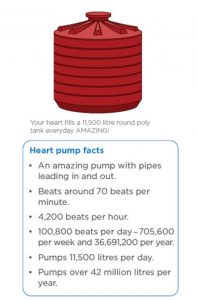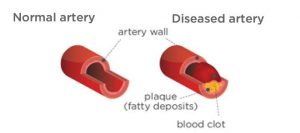

Australians living in rural and remote areas experience more cardiovascular disease (CVD) risk factors, higher rates of CVD-related hospitalisation and are more likely to die of CVD than those in metropolitan areas. The further a person lives from a metropolitan centre, the greater their risk of hospitalisation and death from cardiovascular disease. Living and working on a farm can mean that you are even further away from Emergency Departments that are suitable to treat a possible heart attack. Because of the distance, farm men and women often wait too long before seeking help. With heart attacks every minute counts and getting medical help quickly is important to save heart muscle.
Many women mistakenly believe that heart disease is only a male problem and dismiss their symptoms or don’t seek help until their condition becomes serious. This is of great concern as heart disease is currently the leading cause of death in women and men.
Contributing factors for higher rates of CVD in rural and remote communities are the result of many compounding issues:
- Including smoking, high blood cholesterol and blood pressure, diabetes, physical inactivity, overweight, depression and social isolation.
- Additionally lower incomes, lower levels of education and employment, difficulty accessing affordable healthy food, less sporting clubs, public transport and environments conducive to walking and cycling can also contribute to higher rates of cardiovascular disease,
- A lack of health professionals, reduced health infrastructure and higher costs of health care delivery can also affect patient outcomes following hear attacks.
How Cardiovascular disease develops

The liver is the main processing centre for cholesterol and dietary fat. When we eat too much-saturated fat, (saturated fat usually comes from animals and red meat) the liver transports the fat, together with cholesterol in the form of lipoproteins, into our bloodstream. Too many circulating low-density lipoproteins (LDLs) in our bloodstream lead to fatty deposits that develop in the arteries. This causes the vessels to narrow and eventually block, leading to heart disease, heart attack and stroke and risking the heart pump to stop at any time.
As with saturated fats, consuming too much-added sugar will impact your cholesterol. Excessive sugar intake will increase calories. If not burnt up as energy, they will travel to the liver and be converted into triglyceride fats. Triglyceride fats are then dumped back into the bloodstream contributing to more fatty deposits in the arteries.
For more information on how to find out more about your heart disease risk Click here
For more information on how to keep your heart health Click here
Fast Facts
- The further a person lives from a metropolitan centre, the greater their risk of hospitalisation and death from cardiovascular disease.
- There is no single cause for CVD, but there are risk factors that increase your chance of developing it. There are modifiable risk factors (ones that you can change) and non-modifiable risk factors (ones that you can’t change).
- You can reduce your risk of heart disease and stroke by making healthy lifestyle choices and having regular medical check-ups.
References used for this topic
More Information:
National Rural Health Alliance
Heart Disease Challenges
Deaths in Australia – Australian Institute of Health and Welfare
Leading cause of death in Australia
Heart Foundation
Know your risks
National Centre for Farmer Health
Directors Blog 2020 – Hearten up! Heart health matters
World Heart Day 2021 Resources
What is CVD? – World Heart Day (world-heart-federation.org)
Directors Blog 2020 – Hearten up! Heart health matters https://farmerhealth.org.au/2020/09/22/directors-blog-hearten-up-heart-health-matters
Clinical Care:
Medicare Benefits Schedule
Heart Health Check
|
|